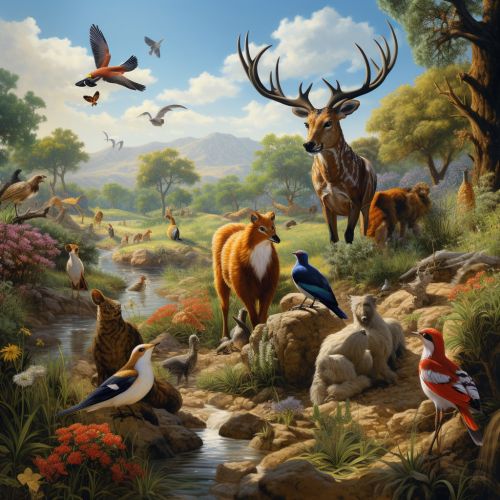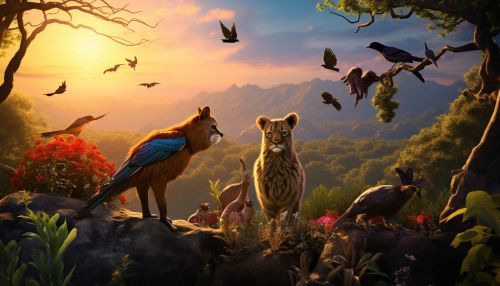Climate Change and Wildlife
Introduction
Climate change, a significant and lasting change in the statistical distribution of weather patterns over periods ranging from decades to millions of years, is a key driver of changes in the Earth's physical and biological systems. It has been identified as a major threat to global biodiversity and is expected to significantly impact wildlife species and ecosystems. This article discusses the effects of climate change on wildlife, the mechanisms by which these effects occur, and the potential implications for conservation efforts.
Impact on Wildlife
Climate change affects wildlife in a variety of ways. These impacts can be direct, such as through increased temperatures or changes in precipitation patterns, or indirect, such as through changes in ecosystems and the availability of food and water.
Changes in Phenology
Phenology, the study of the timing of natural events, is particularly sensitive to climate change. Many species rely on environmental cues to time their life cycle events, such as migration, breeding, and flowering. Changes in climate can disrupt these cues, leading to mismatches between species and their environment. For example, warmer springs can cause plants to flower earlier, potentially before pollinators like bees and butterflies have emerged. This can lead to declines in plant reproduction and changes in food availability for other species.
Range Shifts
Climate change can also cause shifts in the geographic distribution of species. As temperatures increase, many species are moving towards the poles or to higher elevations where conditions are cooler. However, not all species are able to move or adapt quickly enough to keep up with the pace of climate change. This can lead to local extinctions and changes in community composition.
Changes in Ecosystems
Ecosystems are complex networks of interactions between species and their environment. Changes in climate can disrupt these interactions, leading to changes in ecosystem structure and function. For example, changes in temperature and precipitation can affect plant growth and productivity, which can in turn affect the herbivores that rely on these plants for food.
Mechanisms of Impact
The impacts of climate change on wildlife are mediated through a variety of mechanisms. These include changes in temperature and precipitation, changes in the frequency and intensity of extreme weather events, changes in sea level and ocean acidity, and changes in the availability of food and water.
Temperature and Precipitation
Changes in temperature and precipitation can directly affect the physiology and behavior of wildlife species. For example, many species have specific temperature ranges within which they can survive and reproduce. Increases in temperature can push species beyond these limits, leading to declines in population size and potentially to extinction.
Extreme Weather Events
Climate change is expected to increase the frequency and intensity of extreme weather events, such as hurricanes, droughts, and heatwaves. These events can have devastating impacts on wildlife, causing mass mortality events, destroying habitat, and disrupting food and water availability.
Sea Level Rise and Ocean Acidification
Sea level rise and ocean acidification are two other major impacts of climate change that affect marine and coastal wildlife. Sea level rise can lead to the loss of coastal habitats, while ocean acidification can affect the ability of marine organisms to build shells and skeletons.
Food and Water Availability
Changes in climate can also affect the availability of food and water for wildlife. Changes in temperature and precipitation can affect plant growth and productivity, which can in turn affect the herbivores that rely on these plants for food. Changes in sea surface temperature and ocean currents can also affect the distribution and abundance of marine food resources.
Conservation Implications
The impacts of climate change on wildlife have significant implications for conservation efforts. These impacts can exacerbate existing threats to wildlife, such as habitat loss and overexploitation, and can create new challenges for conservation.
Adaptation Strategies
Adaptation strategies are actions that can be taken to help species and ecosystems cope with the impacts of climate change. These can include protecting and restoring habitats, creating wildlife corridors to facilitate range shifts, and managing species populations to increase their resilience to climate change.
Mitigation Strategies
Mitigation strategies are actions that can be taken to reduce greenhouse gas emissions and slow the rate of climate change. These can include promoting renewable energy, improving energy efficiency, and promoting sustainable land use practices.
See Also
- Effects of climate change on plants
- Climate change and agriculture
- Climate change adaptation
- Climate change mitigation


